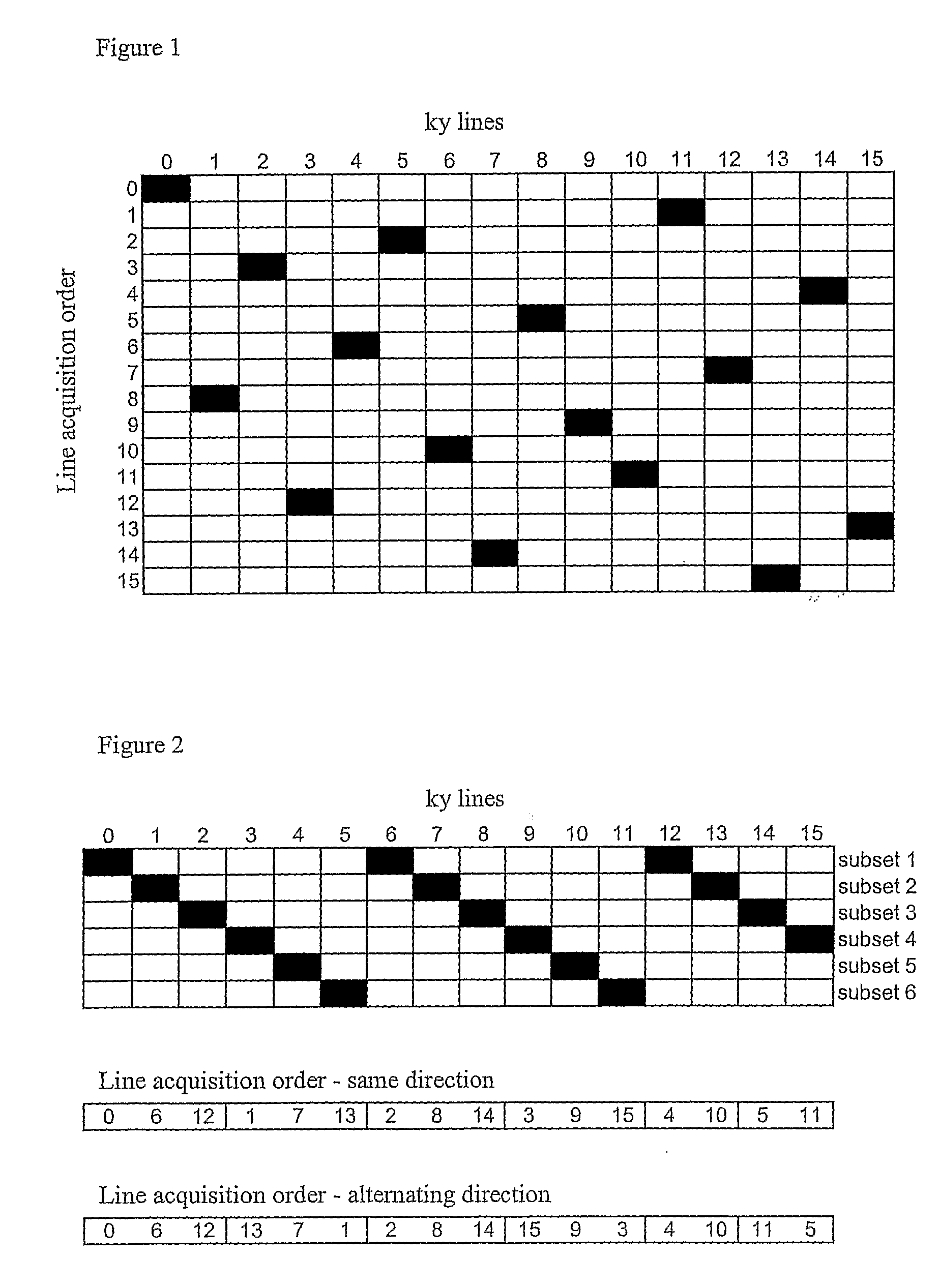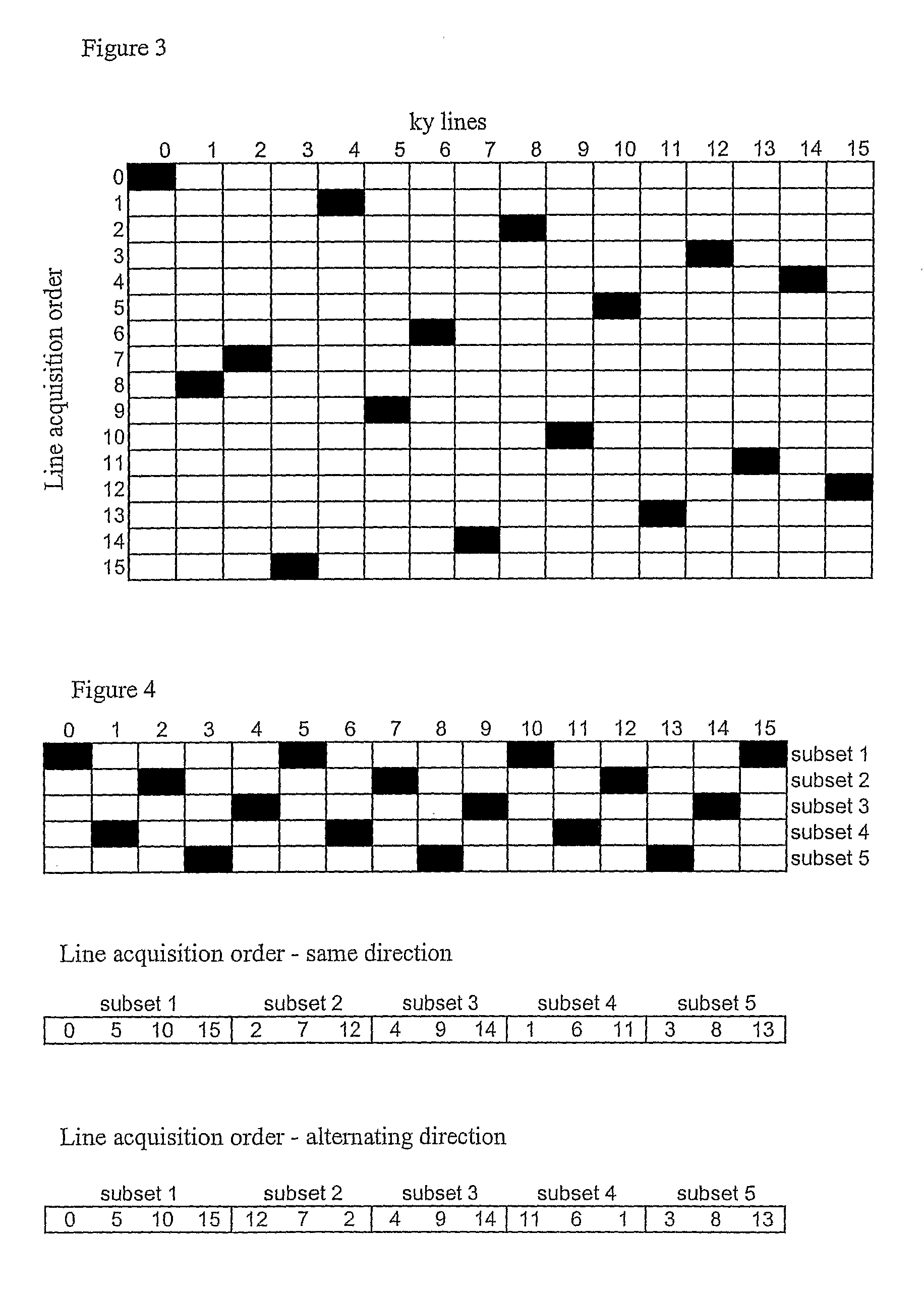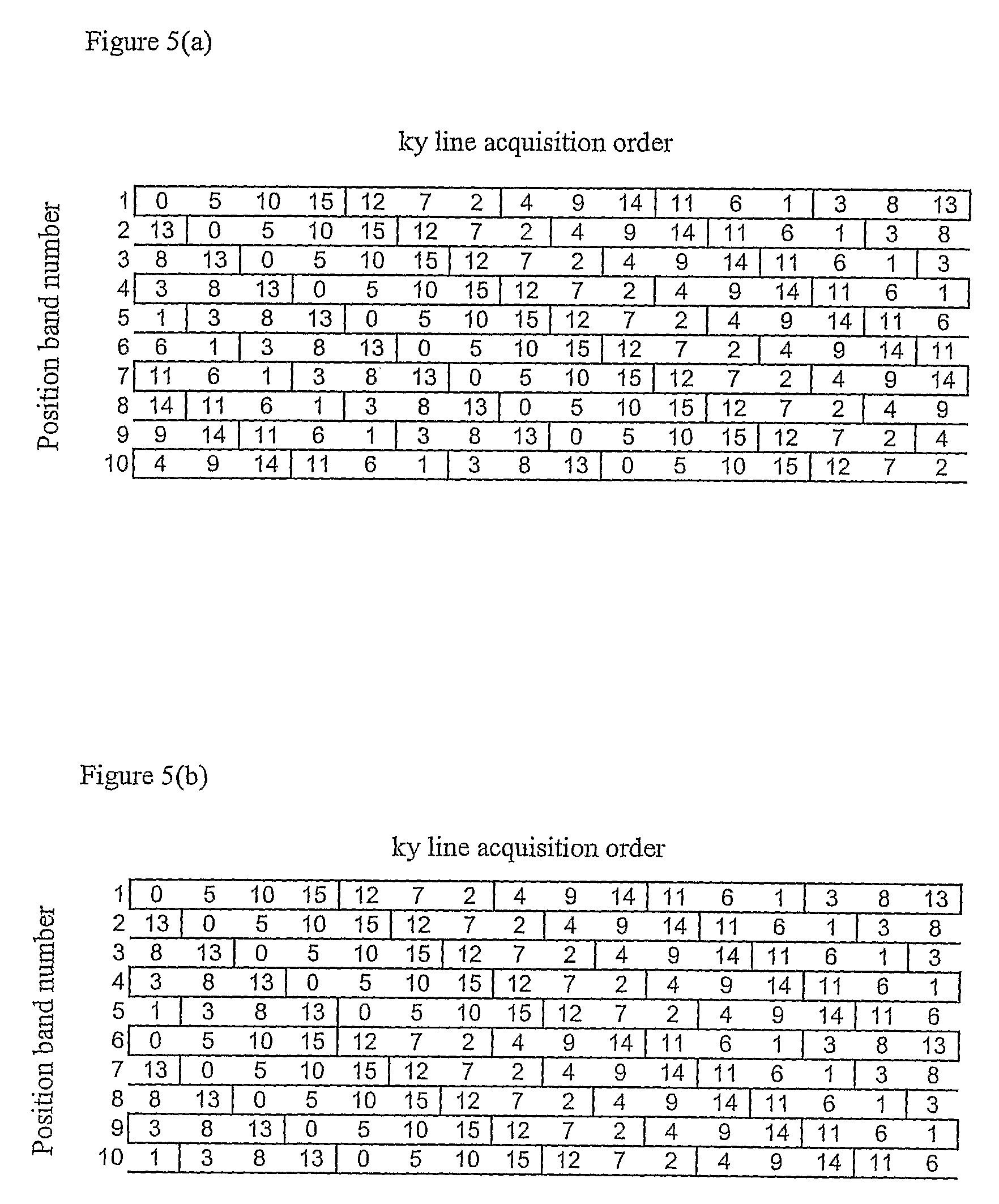Mri Imaging of an Object in Cyclic Motion
a cyclic motion, magnetic resonance imaging technology, applied in the direction of magnetic measurement, geological measurement, reradiation, etc., can solve the problems of loss of scan efficiency, only available images, and the optimal time may still be quite long, so as to improve the scan efficiency
- Summary
- Abstract
- Description
- Claims
- Application Information
AI Technical Summary
Benefits of technology
Problems solved by technology
Method used
Image
Examples
embodiment 1
‘Spaced Part’ Acquisition Order
[0047]FIG. 1 illustrates a scheme for a ky line acquisition where the order of lines is spaced apart across the ky space. For illustrative purposes only, a situation where 16 ky lines are to be acquired is illustrated. Each column in the grid represents one line, and the black squares represent the order in which the lines are to be acquired, each acquisition step being represented by a row in the grid. Thus, in this example, the predetermined order for ky line acquisition is as follows:
0115214841219610315713
i.e. the left-most ky line (line 0) is collected first, followed by line 11, line 5 etc., and finally collecting line 13.
[0048]It can be seen that, in this illustration, each subsequent ky line to be acquired is spaced apart across the entire ky space to ensure that, as the data are collected, signal collection is carried out for all frequency bands, rather than being concentrated merely at one end of ky space.
embodiment 2
Interleaved Acquisition Order (N=6)
[0049]FIG. 2 illustrates a scheme for determining a ky acquisition order comprised of subsets of lines to be acquired, with each subset comprising lines equally spaced across the ky space; in this instance, each subset contains every sixth line in the ky space, from one side to the other. It can be seen that each subsequent subset is interleaved with the preceding one thus covering the entire ky space with 6 subsets. Thus, if the acquisition direction is the same for each subset, the acquisition order will be:
subset 1subset 2subset 3subset 4subset 5subset 60612171328143915410511
and if the acquisition order of each successive subset is reversed, then the order will be:
subset 1subset 2subset 3subset 4subset 5subset 60612137128141593410115
embodiment 3
[0050]FIG. 3 illustrates a line acquisition scheme, again illustrated for an image acquisition comprising 16 ky lines. In this case, each subset of lines is spaced apart across the ky space by selecting each fourth line per subset. Each successive subset is then chosen such that it is spaced, and preferably centred, between those ky lines already acquired, so as to ‘fill in the gaps’ evenly across ky space. In this embodiment, successive subsets of ky line acquisition traverse the ky space in alternating directions. The ky line acquisition order is thus:
subset 1subset 2subset 3subset 40481214106215913151173
PUM
 Login to View More
Login to View More Abstract
Description
Claims
Application Information
 Login to View More
Login to View More - R&D
- Intellectual Property
- Life Sciences
- Materials
- Tech Scout
- Unparalleled Data Quality
- Higher Quality Content
- 60% Fewer Hallucinations
Browse by: Latest US Patents, China's latest patents, Technical Efficacy Thesaurus, Application Domain, Technology Topic, Popular Technical Reports.
© 2025 PatSnap. All rights reserved.Legal|Privacy policy|Modern Slavery Act Transparency Statement|Sitemap|About US| Contact US: help@patsnap.com



